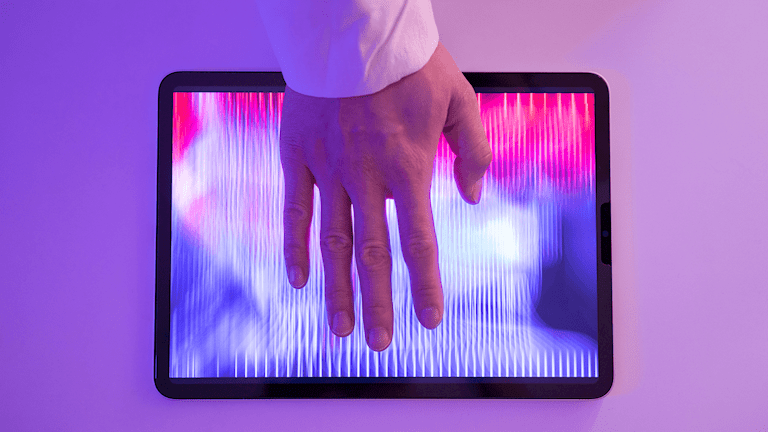How to conduct a consumer research interview: Questions to ask
One of the most important aspects of building great products is understanding the end user—the person who will ultimately be engaging with an app, website, or other digital experience.
One of the tools we use to gain insight and build empathy with these end users is the consumer interview. They’re conducted in one-on-one settings with individuals who fall within the target demographic for a product, service, or business. These interviews can range from informal conversations to more rigorous sessions with a wide array of questions, depending on the research study objectives.
Consumer interviews enable us to get to know our client's users better by uncovering their motivations, behaviors, and interests when using or considering current or new products. They also allow us to learn how we can better engage with consumers on a more human level. This understanding results in an overall better product, strategy, and, most importantly, user satisfaction.
While consumer interviews are flexible and can be tailored to meet that needs of any team, there are core components that ensure success. We start with the following basics when planning them for our clients:
Step 1: Prep work
This step sets the stage for the information gathering to come—a great interview starts with knowing the goals and expectations of the process.
- Set a goal and success metrics for the interviews
- Determine the length of the interview
- Determine the roles of the team
- Assign moderator(s) and notetaker(s)
- Draft an interview discussion guide with key questions to ask participants
- Recruitment
- Choose a recruitment platform or channel (e.g., userinterviews.com, existing client network of user feedback groups, etc.)
- Define selection criteria for participants (e.g., demographics, special skills, industry knowledge)
- Determine the number of participants needed to fulfill the study
- Budget for incentives and other recruitment fees
Elements of a learning agenda for consumer interviews
|
Section |
Definition |
|
Motivation (Why?) |
The context and reason for research. Could be inspired by previous research, could be inspired by market potential. Context could also be aspirational, such as, "Bet the garden, not the farm," or more results-oriented. |
|
Hypothesis (What?) |
A testable, informed belief: "We believe <product/feature/...> with <characteristic aspects> will <results/goals>" |
|
Audience |
Definition of who we will be testing with, informed by personas and representative of the end users. |
|
Recruitment |
Definition of how we will find our audience. |
|
Methodology |
Definition of how we will conduct our research to test our hypothesis. |
|
Goals |
Definition of success. Informed by benchmarks or business requirements. Utilization of goals avoids bias after research is completed. |
|
Additional Questions |
If the hypothesis contains multiple aspects, or there are additional clarifying questions to be answered, additional questions/hypothesis to answer are listed and defined. |
|
Links |
Links to the additional documents, often include measurement plans, interview guides, recruitments details, etc. |
Step 2: Conduct interviews
Once you have a solid plan in place, it’s time to conduct the actual interviews. Tip: For one-on-one interviews, it’s recommended that you set the session length for 60 minutes; any more than that and the interviewee could lose focus.
- Prior to the interview
- Send the participant a reminder email with session date, time, and location 24-48 hours prior to the meeting
- Establish a meeting setting (virtual or in-person)
- Ensure documentation equipment is working properly (e.g., audio/video recording)
- During the interview
- Greet the participant and acquaint them with the team
- Re-state the purpose and agenda of the conversation with the participant at a high level
- Start asking questions and use your discussion guide as a reference
- Tips:
- Avoid asking leading questions; keep them open-ended
- Probe on areas that need clarification
- Speak less; listen more
- Tips:
- Leave time for final thoughts, questions from participants, and closing remarks
- Thank the participant for joining. At this time, you can stop recording the session.
- Post-Interview
- Debrief: Jot down key takeaways or interesting quotes/thoughts from the conversation with your team or on your own
Step 3: Synthesis & insights
After the interview has been completed, it’s time to review the takeaways and start thinking about how to apply the learnings.
- Start by doing Qualitative Coding: categorizing or labeling qualitative feedback to establish themes and better analyze relationships between data points
- Create tags: tags or codes are descriptive words or phrases used to organize feedback into themes, behaviors, or observations
- Review data points under the same tags/code so you can quantify the frequency
- Cluster similar tags to identify themes
Step 4: Actionable recommendations
The final steps in this process would be to form actionable recommendations based on the insights uncovered. Consider the following:
- Rank the feedback by level of importance to your consumers/users
- Check the ranking with your team to ensure you're aligned on the level of importance; selected feedback should consider priority and feasibility
- Create an action plan for the selected feedback
Conducting interviews can help uncover new insights and validate assumptions established before the research phase of product development begins. The basic outline above is only the tip of the iceberg when it comes to understanding end users. Check back often to learn more about how we build empathy, understand motivations, and seek to craft impactful product experiences for end users.



